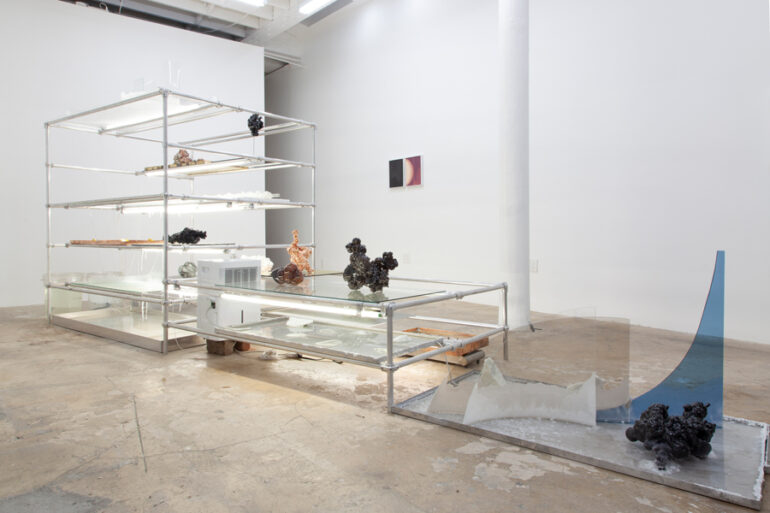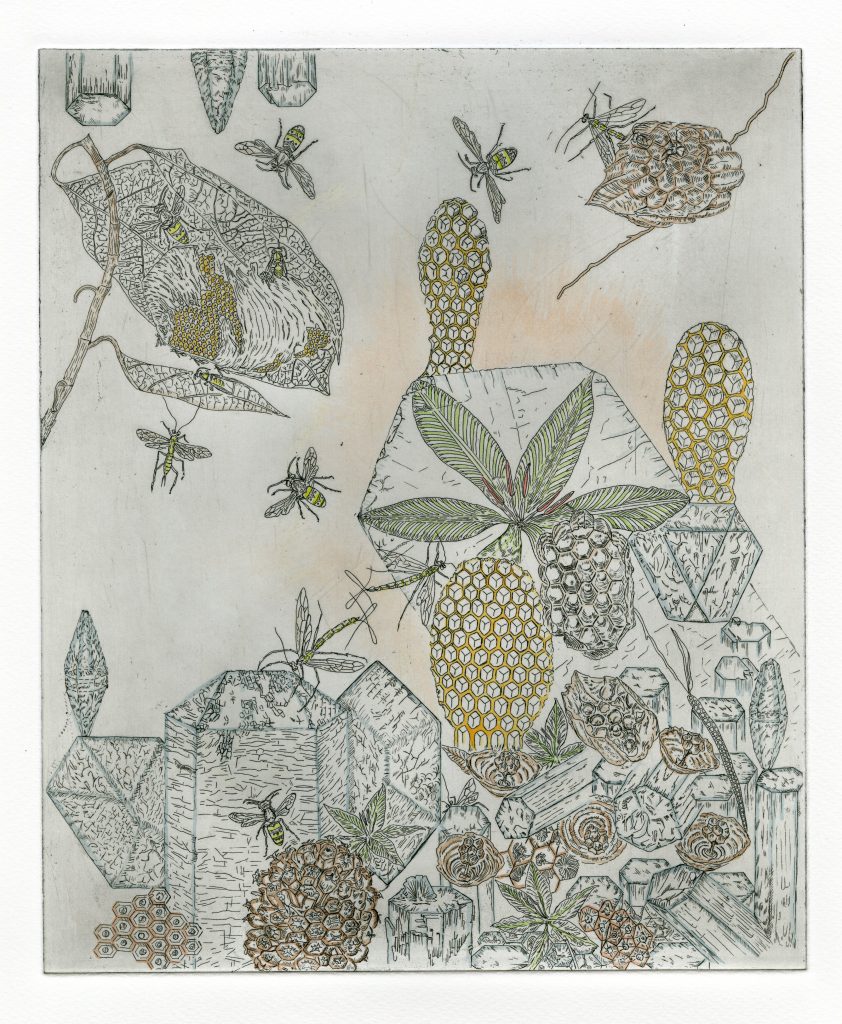Event 1 Blog: From Forces to Forms
The second part of the From Forces to Forms series explored the topic of Morphogenesis. The presentation, led by artist Ellen K. Levy, spotlighted five different artists. The artists presented works in which they utilized natural processes in different ways to create their art. Morphogenesis is defined by google as “the origin and development of morphological characteristics” or “the formation of landforms or other structures”. In this way, this event relates to the Two Cultures phenomenon because it interconnects scientific concepts with art.
The first artist that stuck out to me was William Lamson and his “Badwater” exhibition. This collection of art survives under a climate controlled environment in order to create cyclic flooding and drought conditions, inspired by Death Valley’s Badwater Basin. The gallery displays these geologic forces and allows them to persist and develop without intervention from the artist (Lamson). In essence, it displays the inherent relationship between art and nature. Lamson expressed how important it was for these processes to run their courses naturally.
 |
| "Make Room" by William Lamson |
Another artist that interested me was Haresh Lalvani for his unique body of work. Growing up in a family of welders, I’ve seen my fair share of ironwork art. Unlike welders, Lalvani uses natural forces, mainly gravity and pressure, to shape stainless steel into various forms. In his presentation Lalvani described using heavy metal balls as “paintbrushes” to produce bumps untouched by human hands in smooth, round surfaces.
 |
| Screenshot from Zoom Presentation - "GR Flora" |
 |
| Screenshot from Zoom Presentation - 'Hexagonal Form' |
Anderson, Gemma. “Gemma Anderson - Isomorphology.” Isomorphology Homepage, 2013, https://www.isomorphology.com/index.html.
Becherer, Joseph. “Gram – 2012.” Lalvani Studio, 2012, http://lalvanistudio.com/exhibitions/gram-2012/.
Haresh, Lalvani. GR Flora 24, 100, 2; GR Flora 64, 60, 102. Grand Rapids, Michigan, 2012.
Lamson, William. “William Lamson: Badwater, 2018/2020.” Lafayette Art Galleries, https://galleries.lafayette.edu/2020/02/03/william-lamson-badwater-2018-2020/.
Lamson, William. Make Room. Easton, Pennsylvania. 6 Feb. 2020.
Mortice, Zach, et al. “Haresh Lalvani on Biomimicry and Architecture That Designs Itself.” Redshift EN, 18 Oct. 2017, https://redshift.autodesk.com/haresh-lalvani/.
“From Forces to Forms: Episode 2 ‘Morphogenesis.’” UCLA ArtSci, Pratt Institute STEAMplant Initiative, Feb. 2022, https://us8.campaign-archive.com/?e=%5BUNIQID%5D&u=9baf6baeafa7dd6c42a6db349&id=f7213fa9e8.


Comments
Post a Comment